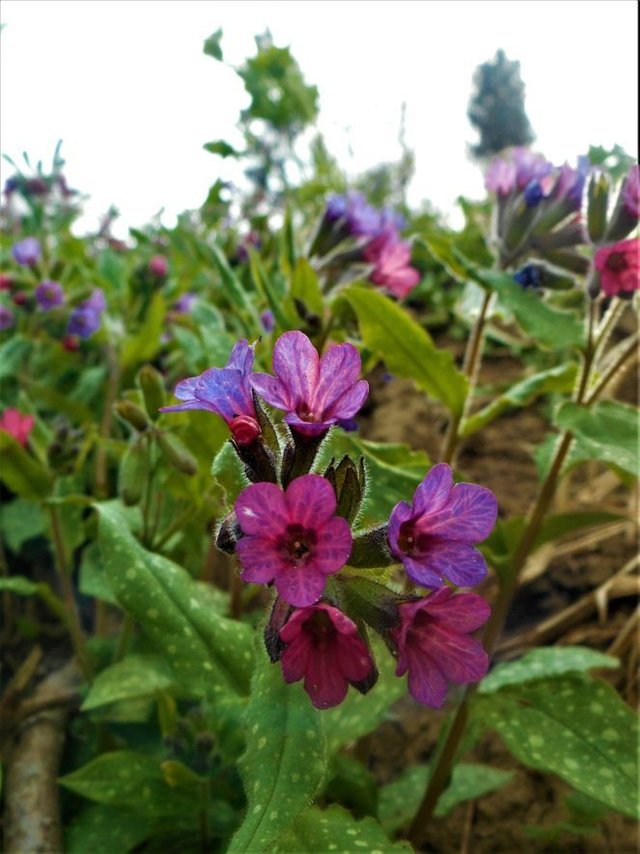Pulmonaria officinalis – for the health of your respiratory system!
Pulmonaria officinalis, is up to 30 cm high plant, a perennial plant, and grows in the deciduous and mixed forests. It is found in the bushes, mountain meadows and river embankment. It loves semi-shady location and fresh, moist soil that is rich in nutrients. We’ll find it all the way to 1,300 meters above sea level.
 The flowers and leaves
The flowers and leaves
Bloom early in the spring, it could be said that in addition to violets and primroses, also Pulmonaria officinalis is one of the harbingers of spring.
The flowers are reddish in color initially, but later due to changes in pH, color from pink to blue and violet tones. Flower bins are hairy. Pulmonaria officinalis bloom from March to April. In the event of a warmer winter, we can already see the first flowers in February.
The leaves are dark green colored with white patches. Leaf shape is ovoid or heart-shaped and have quickly narrowed to the stalk. The upper side of leaves and hairy as mentioned, sprinkled with white patches. Young leaves may also be prepared as spinach, or added as an additive to various salads.
Harvesting and drying
Pulmonaria officinalis gather during the flowering season. So in March and April. The cumulative connected together in bunches and (bunches) is suspended in dry, ventilated area.
The healing effects
As the name suggests, it is Pulmonaria useful for our lungs and respiratory system.
Why?
It contains mucus and silicic acid (which strengthens the lungs), and calcium salts, and so the tea significantly affect the lungs and airways .Pulmonaria officinalis should be first on the list of herbs that help in the treatment of all types of lung disease. They say that when we no other herb does not help, then used Pulmonaria officinalis. This will help us.
As mentioned, it will help in the treatment of pulmonary diseases and respiratory diseases.